What Causes TV Backlight to Fail? From Symptoms to Causes
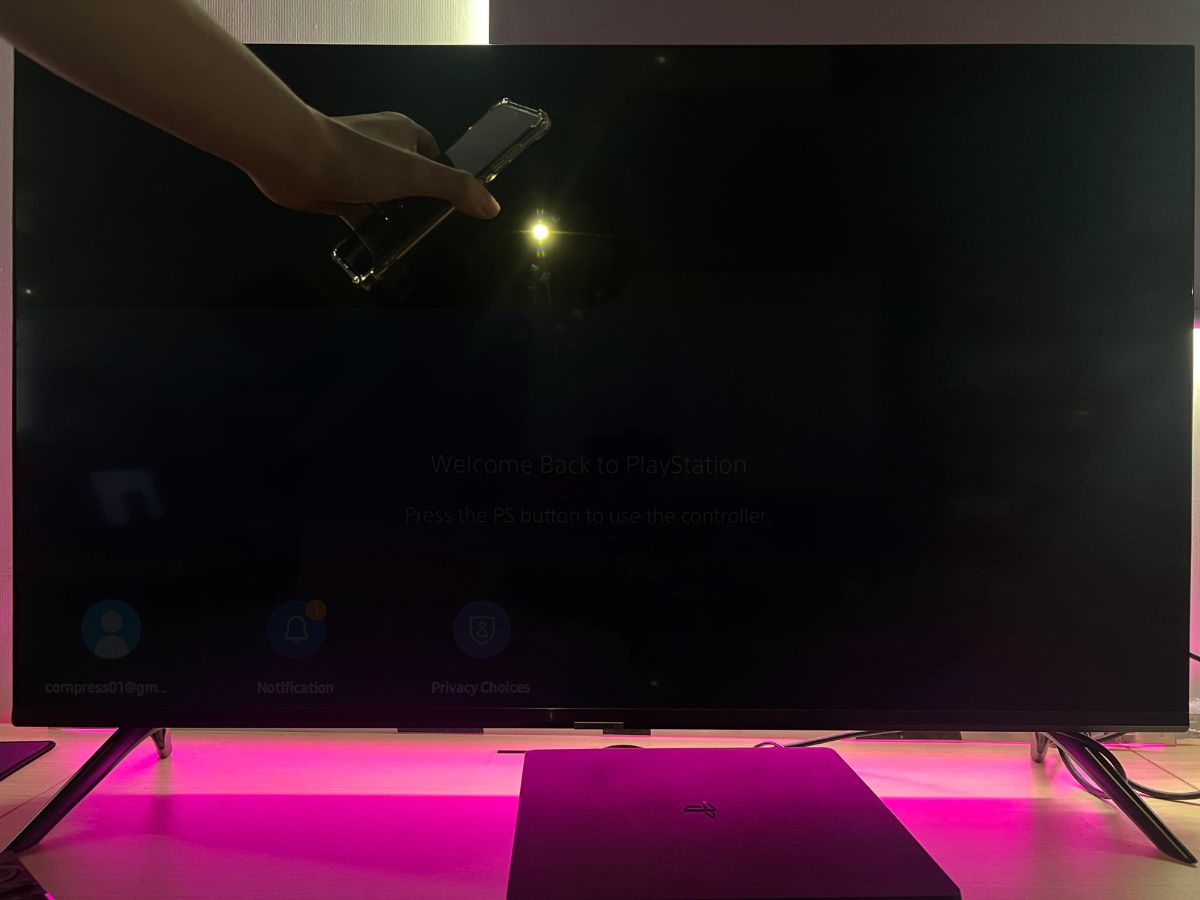
What to Know
- TV backlight issues can stem from loose cables, high brightness stress, aging LEDs, faulty bulbs, power issues, and physical damage.
- TV backlights, lasting 40,000 to 60,000 hours, gradually dim over time due to LED wear and age.
If your TV screen looks unusually dark or dim, there’s a good chance its backlight has failed. While frustrating, this is a common TV issue.
Today, I’ll walk you through a few ways to verify if your TV backlight is actually broken and discuss the top reasons why this happens and how to fix them.
Let’s get started!
Quick Navigation
How to Test a Failed Backlight on a TV
Before taking your TV to the nearest repair center, it’s a good idea to ensure its dim screen is a result of a bad backlight by following this simple trick. All you’ll need to test your TV’s backlight is a flashlight.
Let’s learn how!
Step 1: Connect your TV to power and turn it on. Don’t worry if the screen remains black.
Step 2: Shine a flashlight (the one on your phone works well for this) directly at your TV screen.
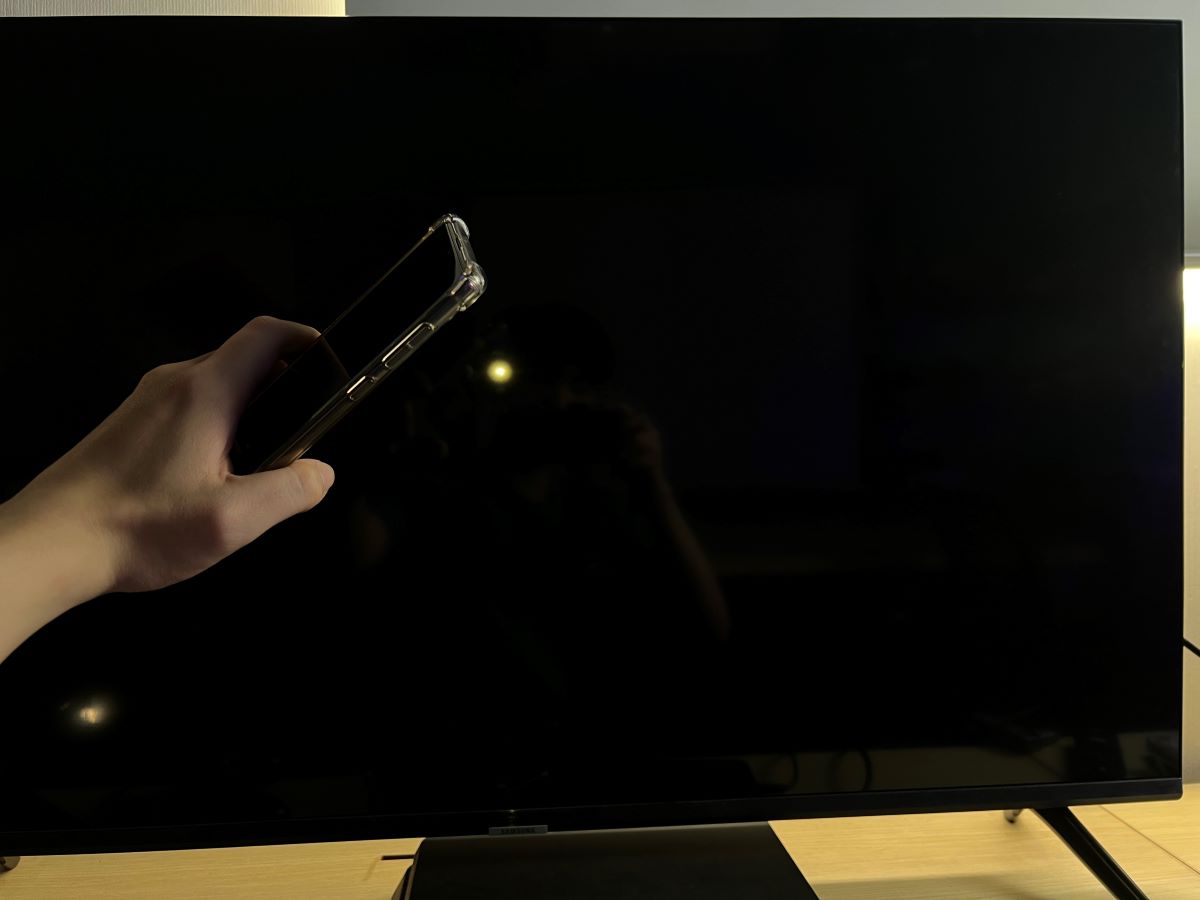
Step 3: Carefully examine the illuminated area of the TV screen. If you can see blurry images where the flashlight is being shone, then your TV is indeed turned on but the backlight is faulty.

If the screen’s illuminated area is simply black, then the problem may not lie with your TV’s backlight.
As a black TV screen is a common issue, we already have a few articles discussing how to fix it. Check out our guides for fixing a black screen on TCL and Sony TVs.
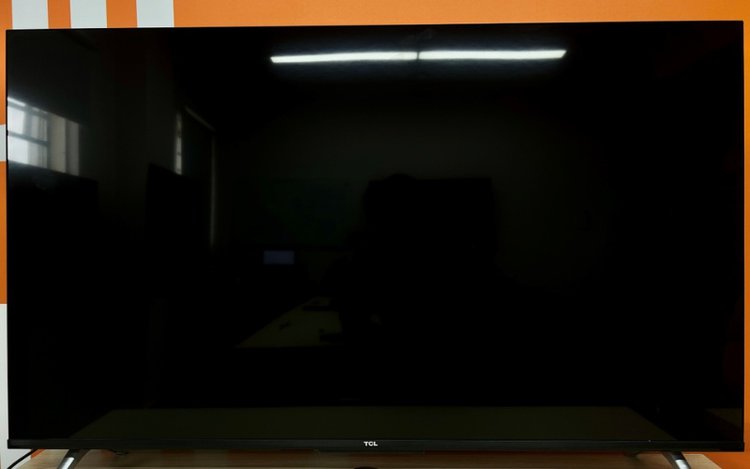
Now that you’ve verified that a faulty backlight is indeed causing your TV’s dark screen, keep reading to learn how to fix it.
What Causes TV Backlight To Fail, With Solutions
Follow our solutions below to find the cause of your TV’s broken backlight and restore your TV to its full brightness.
1. The Connection Cable is Loosened
One of the most common causes of a TV backlight failure is a loose power plug socket. A TV must be fully powered to function normally, so it’s a good idea to ensure your TV is properly connected to power.
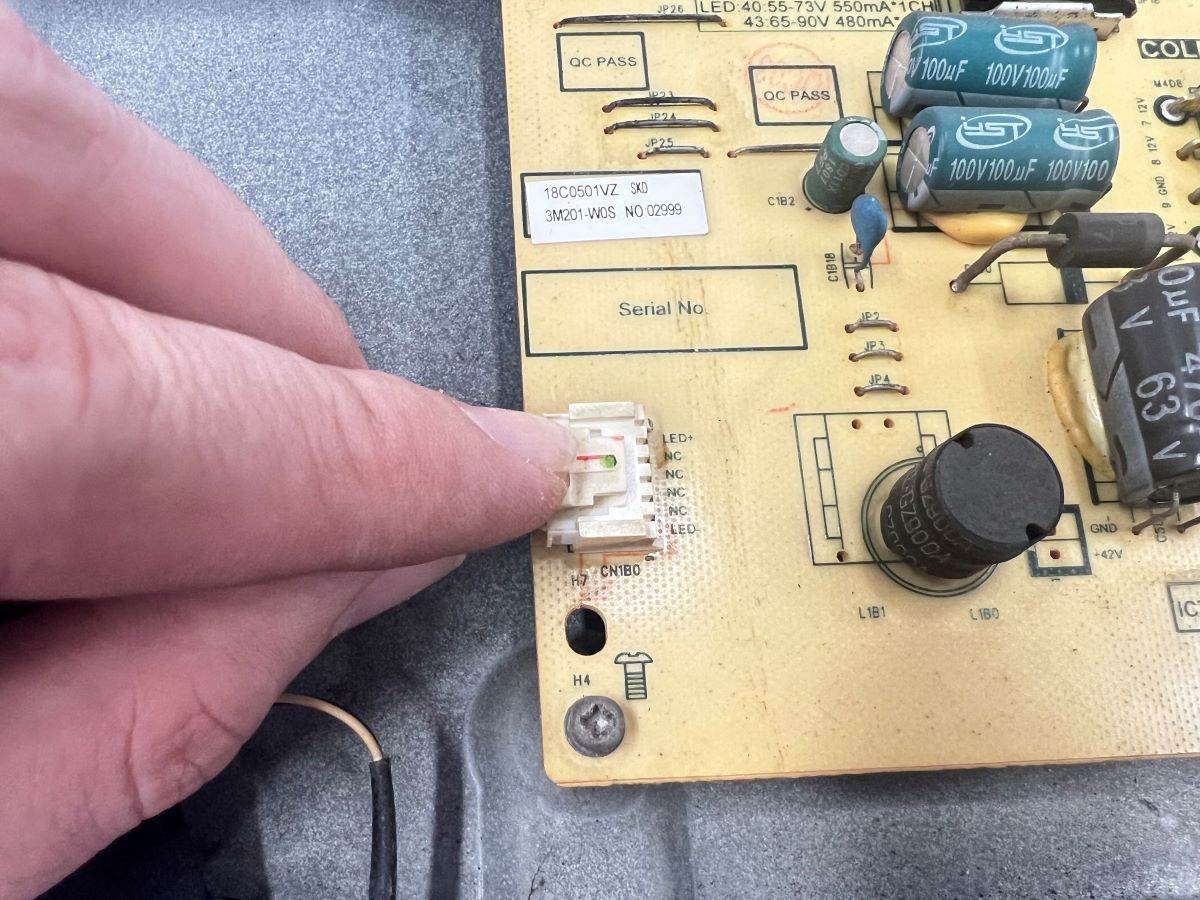
The backlight’s power supply is usually found on the back of a TV. Carefully examine the plug socket and ensure that the cable is securely connected so that the backlight receives sufficient and stable power.
If you notice the cable is damaged, consider replacing it.
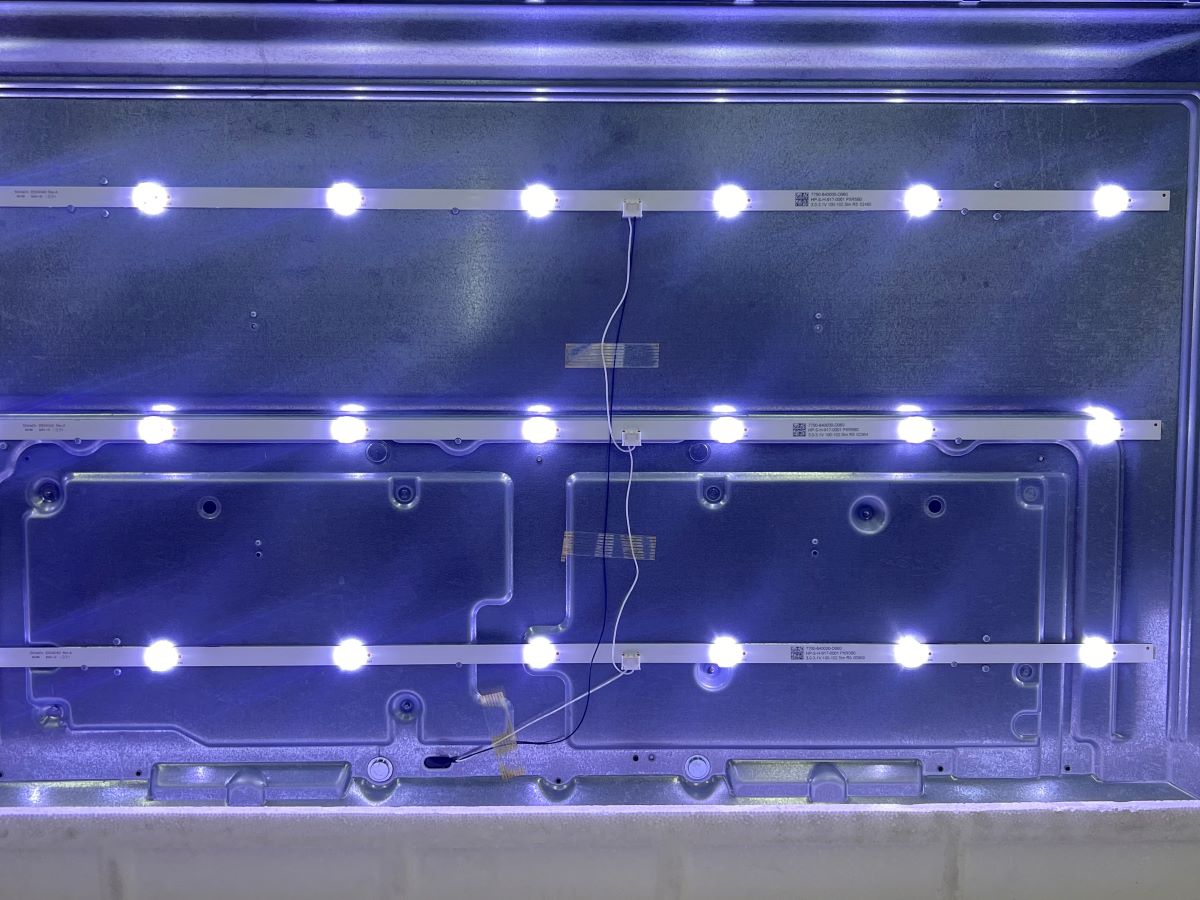
2. High Brightness Settings
Increasing your TV’s brightness to the maximum setting may look good short term, but it can damage the backlight in the long term, drastically decreasing its lifespan and leading to a dim TV.
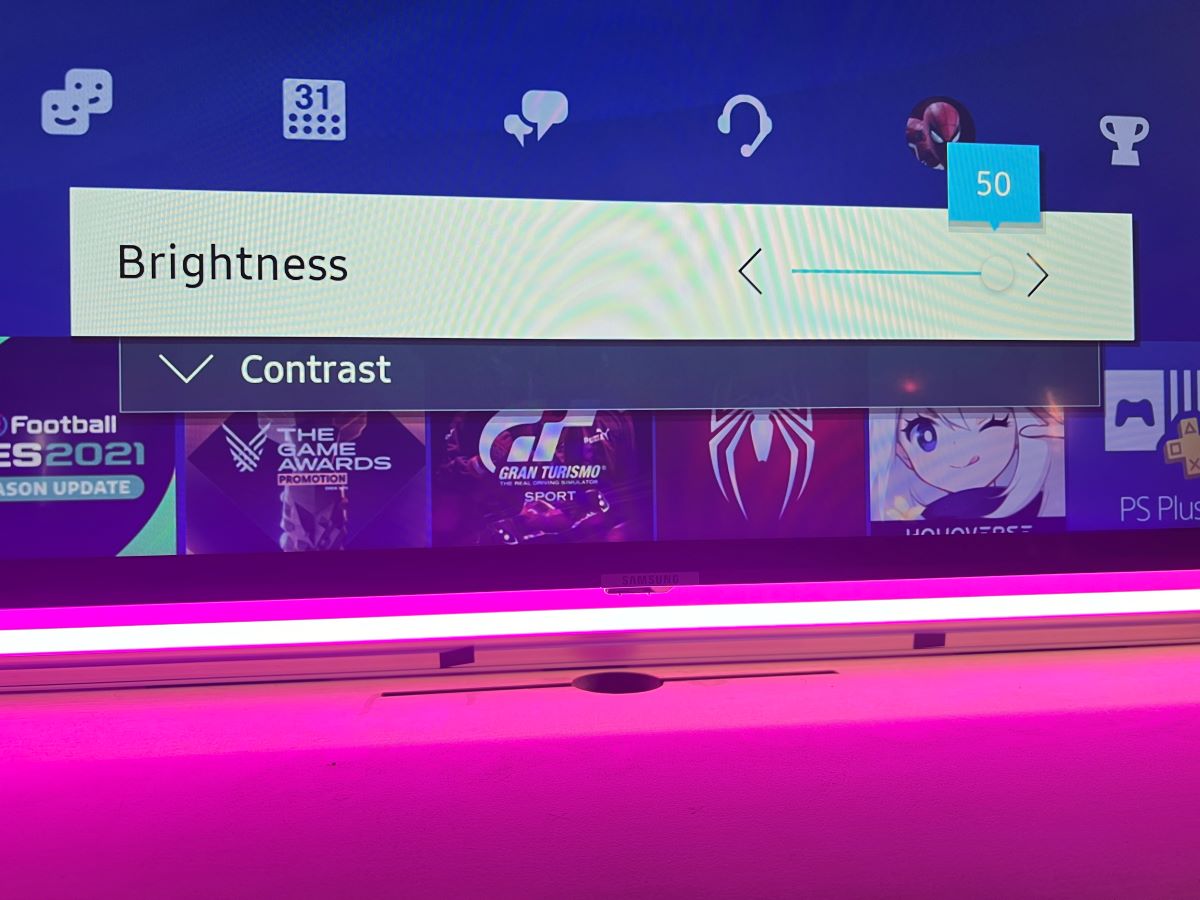
This is due to the high-brightness setting’s strain on your TV’s backlight. While it’s perfectly acceptable to turn your TV’s brightness up from time to time, make sure to keep it at a median level the majority of the time to preserve the backlight health.
When your TV’s brightness is turned all the way up, the backlight’s LEDs (Light Emitting Diodes) work overtime to produce as much light as possible. As you can imagine, this additional work leads to more wear and tear, causing them to burn out sooner.
3. Aging of the Backlight
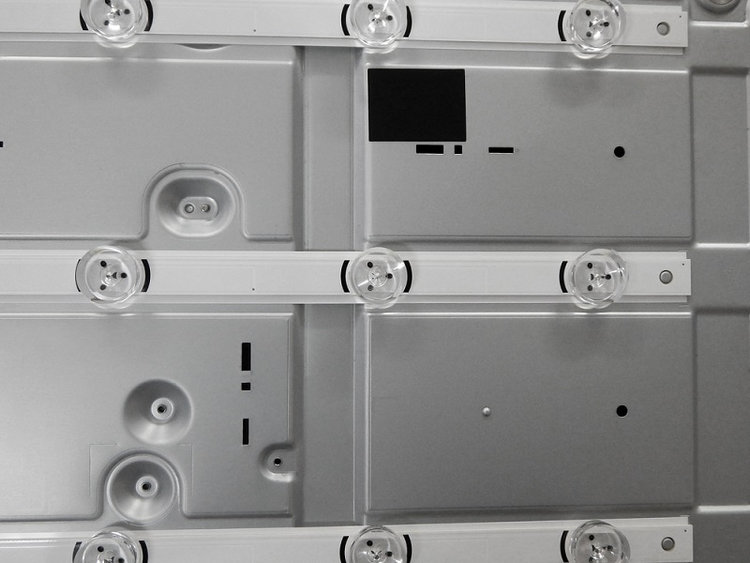
Backlights are not meant to last forever, and after a certain period of use, they will undoubtedly meet their end. LEDs degrade over time, becoming dimmer and eventually failing to light up at all.
Not only do LEDs have a finite lifespan but so do CCFLs (Cold Cathode Fluorescent Lamps). Seeing as backlights most commonly feature these two types of lights, it’s unsurprising that TVs become dim after several years of consistent use.
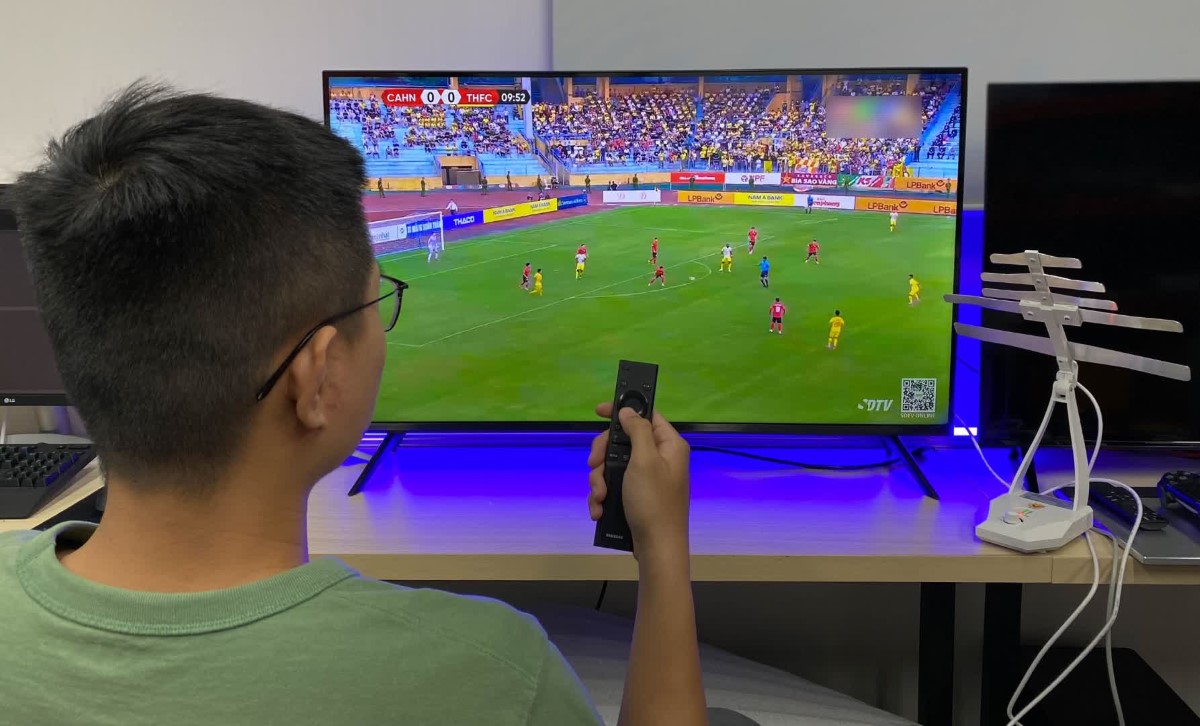
Lights’ lifespans are usually measured in hours of usage with LEDs often lasting anywhere from 40,000 to 60,000 hours of use. Of course, this range can differ depending on how bright your TV is.
My 65-inch Samsung TV has been my faithful companion since 2012. While it still works, it’s become noticeably dim, even when I set its brightness to the maximum level.
This dimming is a sign that your backlight is beginning to degrade and wear down, and maybe near the end of its life.
If you’re set on keeping the same TV, I recommend simply replacing the backlight. This process is slightly involved, so if you don’t feel up to doing it yourself, consider taking your TV to a reputable technician.
4. Defective Backlight LED Bulbs
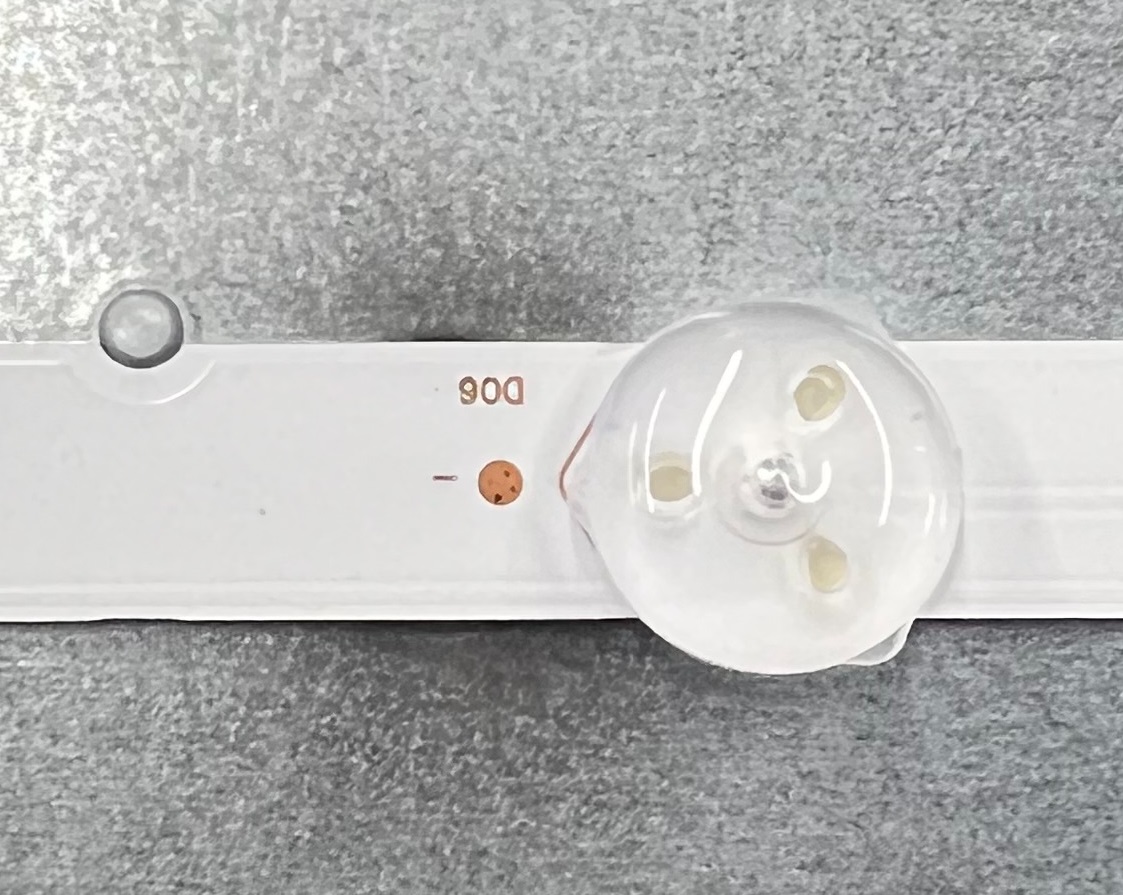
LED bulbs on a backlight strip are designed to last for a limited lifespan, especially with continuous usage.
So, at some point, you will need to have them replaced. This, however, can even be 10+ years later.
LED bulbs can also become defective due to a high voltage of electricity or extremely high brightness, which results in high temperatures. When the LEDs produce too much heat, it can cause them to burn out.
Once backlight LED bulbs get damaged, they have to be replaced for the TV to resume working properly. Luckily, the LEDs are inexpensive and don’t require too much expertise to replace.
That said, you will have to replace the entire strip since the LED bulbs are connected in a series. So when one becomes defective, it affects the rest. Defective bulbs are what cause the screen to be very dim or have dark spots.
Check out this video tutorial below by Repo Apps. He shows how to diagnose and repair defective LED bulbs.
5. Failed Power Inverter
Another possible reason why the backlight system on your TV has failed is that there is a faulty or failed power inverter or capacitor. The solution to this is to have the inverter replaced.
Check out this video for guidance on how to do the inverter replacement.
6. Faulty Powerboard
A faulty or inadequate power supply can lead to backlight failure in your TV. This issue may stem from problems with the TV’s internal power supply unit, voltage fluctuations, or malfunctioning capacitors.
If the power board is failing, repairing or replacing it might be necessary.
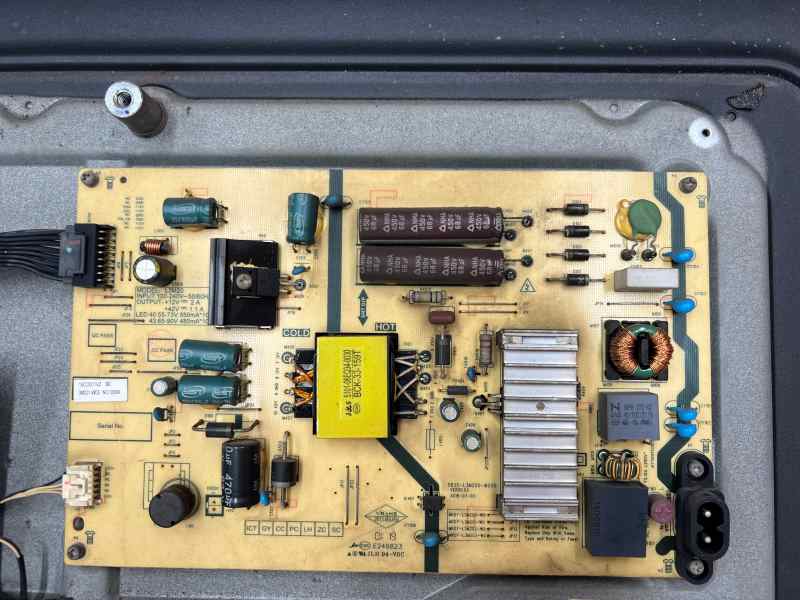
In some cases, this could mean taking your TV to a professional repair service or, if repairs are not feasible, considering a replacement.
7. Sudden Power Surge/ High Voltage
A power surge is a sudden increase in voltage. It happens when a high electrical current (exceeding the recommended rating) passes through a circuit.
When this happens in a TV, it destroys the circuit attached to electrical components. Sadly, that includes the backlight.
Power surges can cause LEDs to burn out as well as cause a short circuit in the LED driver circuit, preventing power from getting into the LCD panel.
A surge, however small, can damage the backlight, especially if it happens frequently.
A power surge can be caused by home appliances such as heavy-duty power tools, washers, and furnaces. It can also be caused by external factors like lightning.
To prevent your TV from power surge-related damages, I would advise you to invest in a good quality surge protector for TVs. A power surge protector will keep your TV shielded from high voltages resulting from internal or external sources.
8. Physical Damage
Physical damage like drop damage can cause the LED strips to shift out of their place. This leads to uneven light distribution in the panel, hence the dark and light spots. Drop damage can also cause the lens to come out of its place.
Signs That Your TV Backlight Has Failed
If you see a dark image, that means the backlight has failed.
LCD & LED TV Repair – No Picture No Image & Blank Black Screen Flashlight Test – Fix LCD & LED TVs
Below are signs that your TV backlight has failed and needs to be repaired or replaced.
1. Black Screen
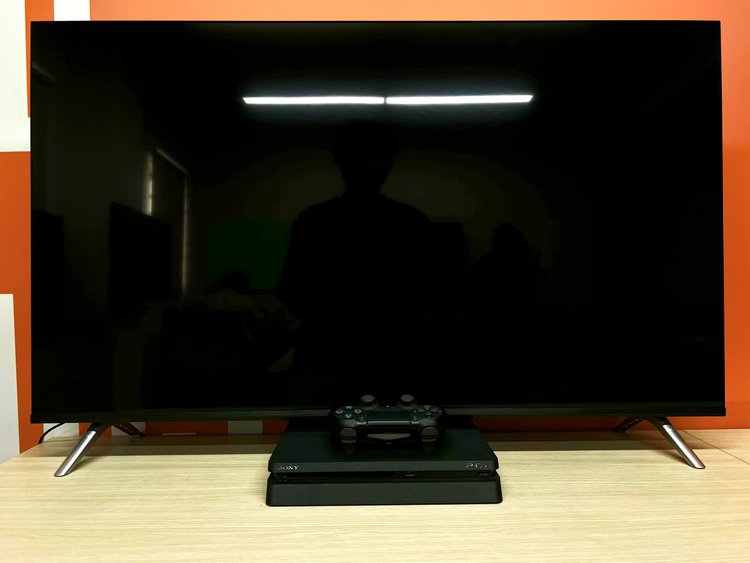
When you turn on your TV and it does not display any image, but the audio is on, there is a pretty high chance that your backlight has failed.
Keep in mind that a black screen is different from a blank screen. A black screen is an indication that either one or more of the LEDs is faulty.
2. Dim Screen
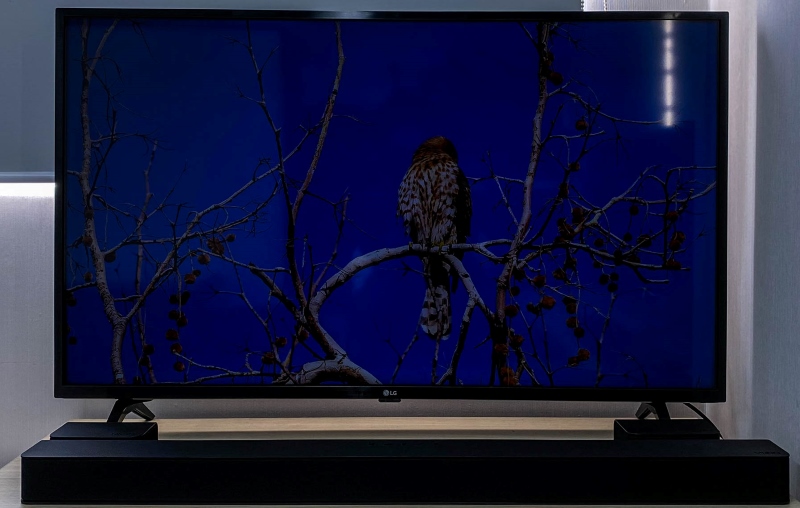
If the screen looks unusually dim even after increasing the screen brightness, the backlight has likely failed.
A dim screen is hard to watch, especially during the day. The natural light from outdoors or light from bulbs overpowers the dim light from the screen, making it impossible to watch. You are forced to watch in a dark room instead.
3. Flickering Screen
A flickering screen is an indication of a dying backlight strip. In some instances, the screen may be working perfectly well, then suddenly go off after a few minutes or start blinking out of nowhere.
4. Dark Spots
Sometimes you will notice that there are sections on the TV screen that are dark.
This normally happens when some LEDs do not light up even though they still conduct power, while others are perfectly functional. The sections with the faulty LEDs appear dark, while the sections with functional LEDs are light.
5. Bright Spots
This often occurs when the lens moves out of the backlight LED strip.
If you try to move the TV, you will even hear the lens moving inside the panel. If you look closely, you may even see the lens on the bottom of the TV.
Wrapping Things Up
TV backlights can fail for a myriad of reasons, including defective LEDs, a sudden power surge, or physical damage.
You can verify if your TV backlight is faulty by shining a flashlight at the TV screen and observing if you can see any blurry images in the illuminated parts of the screen.
The solutions listed in this article can be performed at home with the proper equipment and expertise. However, if you don’t feel confident repairing your TV yourself, feel free to take it to a local technician.
What’s your experience with a failed TV backlight?
Let us know in the comments below!
Yesenia Achlim is a technical copywriter and editor with a focus on AV equipment. She aims to break down complicated topics and make technology accessible, no matter your technical expertise. When she’s not teaching you how to replace a projector lamp, you can find her reading and baking.



I like the discription and have been worried about how to change my backlight for my TV but now have the understanding and thanks for that.